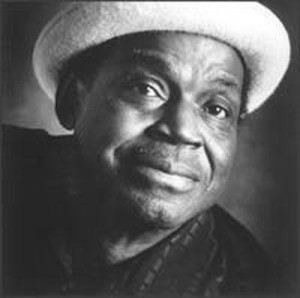Black History, Music, The Arts

Willie Dixon
Born in 1915, Willie Dixon did more to shape Chicago Blues than nearly anyone else besides perhaps Muddy Waters. He was the ultimate all-around blues man, working as a bass player, compser, producer, arranger and bandleader..to name a few. He initially began a career as a boxer, even sparring with Joe Louis, but it only lasted four fights after an altercation with his manager ended his pro career.
In 1939 he formed The Five Breezes which played until 1941 when he was arrested for refusing to serve in the armed forces. During his term and after he got out, he continued writing, playing and producing music all the way until his death in 1992. He was and still is a major influence in his field.
Dixon was an indispensable “behind-the-scenesâ€�� musician in the postwar Chicago blues scene. He was a notable songwriter, and his compositions for Muddy Waters, Howlin’ Wolf, Little Walter, Koko Taylor, and Otis Rush became part of their signature repertoires. (more…)
Black History, Firsts

Sheriff Lucius D. Amerson
Sheriff Lucius Amerson’s fat Colt revolver is scarred and corroded from that night four decades ago when his patrol car crashed and burned while he chased a stolen vehicle down a winding road in rural Alabama.
His size 16 1/2 shirts, on which he would pin his badge, name plate and “sheriff” in gold letters, are creased and yellowed.
And the 1960s newspaper clippings from across the country noting Amerson’s election as the first black sheriff in the South since Reconstruction are crumbling.
But as these items sit on a table in a museum storage facility in Suitland, they conjure memories of a forgotten figure from the civil rights era, a former Army drill sergeant who strode onto the stage in the segregated South determined to show that a black lawman could provide equal justice for all.
(more…)
Black History, Government

George Washington Murray
South Carolina Congressman George Washington Murray was born near Rembert, Sumter County, South Carolina, on September 22, 1853 to slave parents. He attended public schools, the University of South Carolina, and the State Normal Institute at Columbia, where he graduated in 1876.
After graduating, Murray taught school and worked as a lecturer for the Colored Farmers’ Alliance for 15 years. In 1890 he became an inspector of customs at the port of Charleston. Two years later in 1892, Murray, a Republican, was elected to represent South Carolina’s 7th Congressional District which included Charleston.
Murray took his seat in the Fifty-third Congress on March 4, 1893. He immediately focused his efforts on protecting black voting rights in the South at a time when growing numbers of black voters were being excluded from the polls. Murray was also a member of the Committee on Education. He also took a seat on the Committee on Expenditures in the Treasury Department.
(more…)
Black History, Firsts, Government

Henry A. Rucker
Mr. Rucker, born a slave, had been owned by the King family of Athens, Georgia (in-laws of Atlanta journalist Henry Grady). Following the Civil War, Mr. Rucker opened a barber shop on Decatur Street in Atlanta; attended Atlanta University; was a delegate to the Republican National Convention in Chicago, Illinois (1880); was appointed by the President Grover Cleveland as a clerk in the internal revenue collector’s office in Atlanta (1880-1885, 1889-1893).
He was later appointed to the position of Collector of Internal Revenue for the District of Georgia by President William McKinley. Henry Rucker was the only African American to receive such an appointment. He served from 1896 to 1910. Mr. Rucker was active in the Niagara Movement and the NAACP.
He married Annie Eunice Long (1865-1933) and had eight children: Henry, Jr., Elizabeth (Bessie), Lucy Lorene, Jefferson, Neddie, Hazel, Alice, and Ann L. The family resided on Piedmont Avenue.
Black History, Law, Politics
 She was born in Jacksonville, Florida, but at the age of 12 her family moved to Atlanta, Ga. She received a B.A. (magna cum laude) from Wellesley College, a J.D. from Harvard Law School, and a M.P.P. in business and government policy from the Kennedy School of Government at Harvard.
She was born in Jacksonville, Florida, but at the age of 12 her family moved to Atlanta, Ga. She received a B.A. (magna cum laude) from Wellesley College, a J.D. from Harvard Law School, and a M.P.P. in business and government policy from the Kennedy School of Government at Harvard.
During the Obama Campaign for President, Patience served on the Obama/Biden Metropolitan and Urban Policy Advisory Committee and the Economy, Globalization, and Trade Policy Advisory Committee. In this role, she worked alongside others to provide local information to campaign leads. She downplays her role saying there were several people on the committee but whether there were 5 or 100 members we’re certain Patience contributed greatly.
In addition to working on policy Committees, Patience beat the
pavement locally, working on BWFO4Change phone banks and
volunteering in Virginia evenings and weekends to help elect Senator Barack Obama to the Presidency. When the campaign came to a close, she did not lose steam—she informed the campaign office that she was willing to go anywhere in Virginia to help out on Election Day. She didn’t expect them to say, “Great, we need help in Martinsville, VA.â€� It is important to note that Martinsville is 300 miles from Washington, DC and only 13 miles from the North Carolina border.
(more…)




